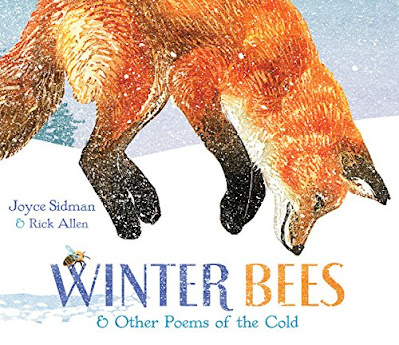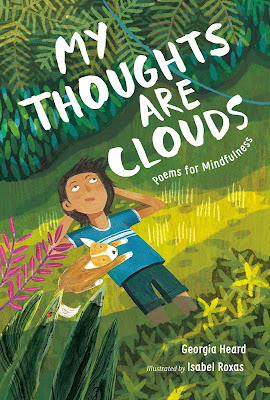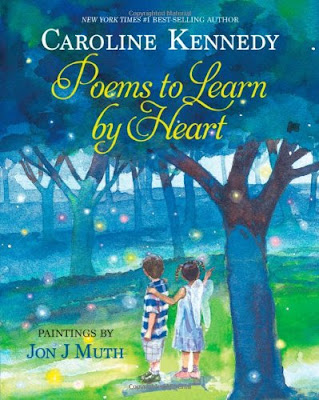Winter Bees & Other Poems of the Cold
Bibliography:
Sidman, Joyce. Winter Bees & Other Poems of the Cold. Ill. by Rick Allen. Boston: Houghton Mifflin Harcourt, 2014. ISBN: 978-0547906508
Summary:
In Winter Bees & Other Poems of the Cold, Joyce Sidman shares her wonder for the miraculous ways in which animals and plants survive and thrive in the winter. The migration of tundra swans, the hibernation of snakes, the molecular structure of snowflakes, the companionship of a mother moose and her offspring, the warmth-making huddles of bee colonies, the under-ice activity of beavers, the surprising hunting partnership of ravens and wolves, the burrowing of voles under snow, the hardening of deciduous trees, and more. Each beautifully crafted poem is paired with an informational sidebar which discloses incredible facts about these wonders of the natural world. Rick Allen’s amazing linoleum-printed illustrations match Sidman’s poems in their breathtaking beauty and texture. A glossary of scientific terms appears at the end of the book.Analysis:
You can’t go wrong with Joyce Sidman. Her poems are delightful to read aloud, and you will always learn something new. In this stunning book, Sidman’s sense of wonder is contagious, and together with Rick Allen’s illustrations, they create a reading experience that is both informative and aesthetically profound.
In “Snake’s Lullaby,” the words hiss with serpentine alliteration: “seek the sink of sheltered stones / that safely cradle sleeping bones.” Readers will learn words like “ectothermic” and “brumate” which mean cold-blooded and hibernate in the reptile world. (“In Manitoba, Canada, scientists have discovered hibernaculums that host up to 20,000 garter snakes!”) Rick Allen’s illustration shows a tangle of striped snake bodies and flickering tongues among orange autumn leaves. (Can you spot the red fox in every illustration? Sometimes she is almost completely hidden!)
In “Winter Bees,” we learn that bee colonies huddle together around their queen and a storehouse of honey, generating heat with their buzzing bee bodies. Sidman uses gorgeous similes to capture this fascinating behavior: “Alone we would falter and drop, / a dot on the canvas of snow, / Together, we boil, we teem, we hum. // Deep in the winter hive, / we burn like a golden sun.”
One of the most surprising and interesting facts readers will learn is the symbiotic relationship between ravens and wolves in the poem “Brother Raven, Sister Wolf.” Ravens alert wolves to the presence of prey with their cries, and then the ravens feed together after the wolves make a kill. Their partnership is not exactly a cooperation, and the ravens sometimes tease and taunt the wolves like pesky siblings. In the poem, they call back and forth to each other in distinct voices: “You are a Squawker, Croaker, / Alarm-on-the-wind. // You are Slinker, Shadow, Nose-to-the-ground.” Just like brother and sister they cry, “Stop following me! / Stop following me!”
I could go on and on, but you should just pick up a copy of Winter Bees and see for yourself. The poems and the art are beyond stunning and will “wow” readers of all ages. Venture out into the snow.
Excerpt:
Activities:
- Read aloud "Brother Raven, Sister Wolf" with two readers, one as Raven, the other as Wolf.
- Read aloud "Snake's Lullaby" and add heavy emphasis to the S's to mimic the snakes' slithering hisses.
- Read aloud "Snowflake Wakes" and invite young readers to dance and whirl like falling snowflakes.





Comments
Post a Comment